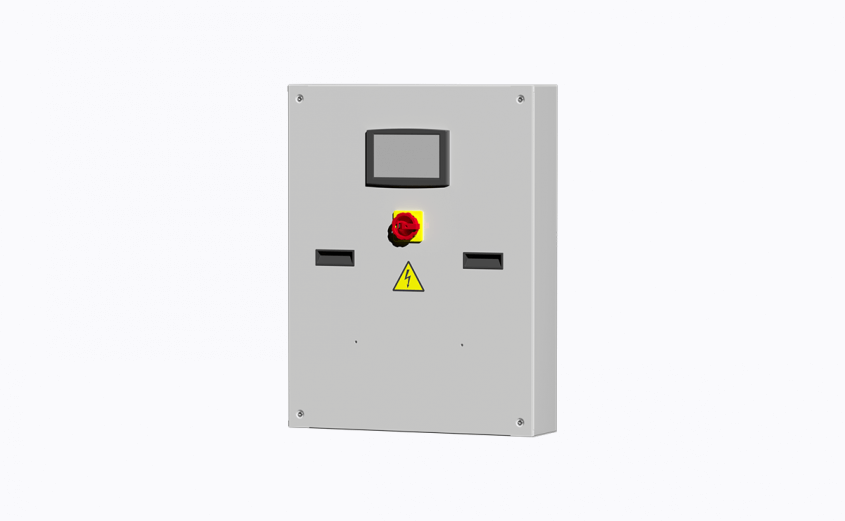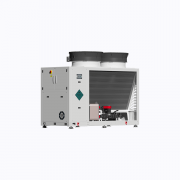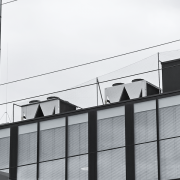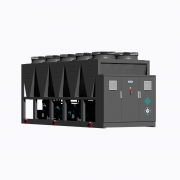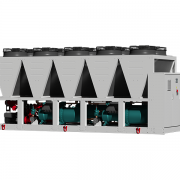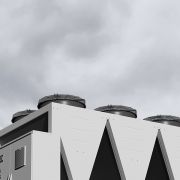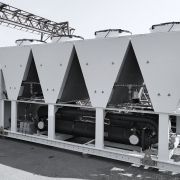Sequence management for chiller plants
When it comes to chilled water plant optimization, the control strategy based on management of individual water chillers is not an optimum approach to achieve the best results in terms of energy efficiency.
Individual control of the water chillers with common pipework will cause unnecessary cycling of compressors and associated excessive power consumption as a response to changes in cooling demand; consequently, compressor cycling will lead to unstable return water temperature and increased wear of compressors.
Simultaneous control of multiple chillers within a system with common supply and return pipework helps to improve efficiency and maintain stable return water temperature. At the same time, synchronizing the concurrent operation of the units within the chiller plant allows undesirable effects of compressor cycling to be avoided:: sequence management system imposes cooling demands on individual units in a way that minimizes the activation/deactivation of compressor stages. When the cooling demand changes, the common control system selects particular chiller units to adjust their compressor stages as necessary.
To improve the energy efficiency of the chiller plant, Kaltra developed its Sequence Management System (SMS) which offers different optimization approaches. The SMS performs constant supply or return water temperature control, depending on the activated mode of operation, as well as ambient air temperature, and will automatically carry out specific control operations on the connected chiller plant depending on a number of factors:
- water temperature – SMS activates the chillers that are currently in standby mode in case of water temperature reaches its set-point limit.
- chiller rotation – SMS will perform load sharing on the connected chiller plant by rotating the standby chillers over a period of time.
- emergency alarms – In the event of critical alarm detection on any chiller within the plant, the SMS will automatically switch the alarmed unit into standby mode and run an available standby unit in its place.
- free cooling availability – when free cooling is available, SMS will give a priority for free cooling chillers over DX cooling ones. If the free cooling potential does not satisfy the cooling demand of the system, SMS will also enable non-freecooling chillers. The mechanical cooling will be activated in stages in order to top-up the cooling capacity provided by the free cooling chillers until the demand has been satisfied.
- individual chiller settings – SMS reads the set points of individual chiller within the chiller plant to select the units which will perform most efficiently under the given ambient conditions and includes them into rotation list with high priority.
- in the event if the SMS enters a critical alarm condition or in the case of network failure, all the connected chillers will revert to standalone operation until the fault has been cleared.
Chiller sequencing significantly affects the performance and energy efficiency of multiple chiller plants. To optimize chilled water plant operation, the part load performance of the individual chillers, the overall performance of the plant, ambient conditions and cooling demands have to be taken into consideration. The sequence management system performs the analysis of these factors and ensures the most efficient chiller plant management.
Kaltra is a world-known provider of cooling technologies and advanced cooling products for mission-critical applications, such as data centers, clean rooms, contaminant-free areas, processing plants, and other facilities where reliability and energy efficiency are key factors. Kaltra’s cooling equipment range includes precision cooling systems, air-cooled and water-cooled chillers, evaporative cooling solutions, dry coolers, and condensers.
For more information on Kaltra and its products call +49 911 715-32021
or visit www.kaltra.de

